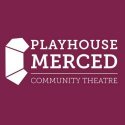 AN UNSOLVED MURDER IN MADERA: Part 1
AN UNSOLVED MURDER IN MADERA: Part 1
MADERA - In 1977, I entered junior high school in the small Central California town of Madera. While I thought I knew everything and had experienced things that other twelve-year-old boys had not, it would be many years before my eyes would be opened to the big picture and the truth about people: We should all be treated equally no matter what the differences.
I was an only child of conservative Republican parents with country club memberships. Dad was an accountant and a member of the Elk's and Masonic Lodges. Mom was also involved in community service clubs. Being an only child, I had my parents' full attention most times. I sometimes forgot that I was only a lad and my mouth occasionally landed me in some real trouble.
In the seventh grade, I signed up for a class in Journalism. Writing was never my strong suit. Why I signed up for the class I still don't know, but in that class, I met my first of four journalism teachers, Glenn Reitz. While most of my classmates and other students in the school liked Mr. Reitz, he and I did not immediately hit it off.
Looking back, the problem was quite simple. I was lazy and wanted to crack jokes more than I wanted to crack the books and complete his assigned work. Disrupting the class is a great way to get attention when you're a preteen. I saw Glenn Reitz as a Gabe Kaplan type of teacher who tried to connect with his students through humor. His classes were funny, but I tried to be funnier. I now regret a lot of my misspent time because he did have something to teach me that eventually, I would realize I really wanted to learn.
In the seventies, when you're a young man, calling your classmates fags or gay was probably the same as the kids in the forties calling their playmates Japs or Krauts. Truth be told, at that time in our lives we had no idea what a homosexual really was. Our parents and grandparents warned us about them and in our minds, we demonized them based on what our parents had told us. "Fag" was a slang term used to make some other kid look different, even though the kid was just the same as any of the other kids in school.
What I didn't realize was that the seventies in the rural Central Valley, like many places across the country, was a very dangerous place to live an openly homosexual life. At that time, you might suspect that someone was gay, but you never knew. Police were arresting and harassing men in gay bars from coast to coast, and even worse, gays were being killed on the streets, and the police were doing little to either stop it or investigate the guilty parties.
By the time I was in the eighth grade, California Proposition 6 (The Briggs Initiative) was on the ballot. With the help of Christian singer Anita Bryant, John Briggs, a conservative state legislator from Orange County, attempted to get California voters to ban gays and lesbians, and possibly anyone who supported gay rights, from working in California's public schools.
In California schools, the eighth grade is the first time you are really exposed to politics. At the time, you had to pass your Civics class to advance to high school. I finally found a class I loved. I remember being a young kid running around the Republican Campaign office in 1968 and 72 while my mother worked to elect Richard Nixon to the Presidency. I remember more from the 1972 campaign than the 68, but I grew up hearing the stories about how cute I was in my little boy shorts and red hair.
In Mrs. McBee's eighth-grade Civics class, the day always started with current events. When Proposition 6 was brought up, the class would usually end up trying to out a teacher that we all thought might be gay. Mrs. McBee would assure us the teacher wasn't and would get us back on track, usually talking about all of the Democratic candidates she supported in the election. My teacher was a Democrat. How was a young Republican like me going to survive?
It turns out that I did just fine that year. Mr. Briggs did not. His initiative went down in flames and is now just a footnote in the life story of slain San Francisco Supervisor Harvey Milk. The Briggs initiative ended up doing far more to further the cause of gay rights in this country than it did to limit them.
This was in large part due to Harvey Milk, who called on the gay community to come out of the closet to their friends and family, to show 90% of the country that they did know one of the 10%. He argued that when people realized that they knew someone who was gay, the demonization would begin to fade from the whole community. Though the proposition passed in the Central Valley, Milk, and his supporters stopped the Briggs initiative statewide, and it was the first major win for civil rights for the gay community.
Of course, soon after this, Milk and San Francisco Mayor George Mosconi (a supporter of the gay community and the anti-Prop Six movement) were gunned down by former San Francisco Supervisor Dan White in the city's city hall.
Coming out in Berkeley or San Francisco might have been one thing, but in the Central Valley, the gay community was still demonized. And in that eighth-grade class, when the students would speculate on who was gay at Thomas Jefferson Junior High, we never picked the one man that was. Glenn Reitz.
We wouldn't learn about Mr. Reitz's secret life until a Tuesday morning in March of 1985. Glenn didn't show up for work. He lived just half a block from the school, and the principal, Benny Barsotti, was concerned. He walked over to the teacher's house but got no answer at the front ,. Reitz's car was gone, but for some reason, Barsotti went around to the back door where he saw something he would never forget.
The Madera Police were called, and when they were able to enter the locked house, they found the thirty-five-year-old teacher, covered with a bath towel, slumped over next to the locked front door. The place looked like a house of horrors. Bloody handprints along the walls, a trail of blood that started in the bedroom, followed to the bathroom, and ended inside the front door where the nude body of my former teacher was found.
The crime tape went up outside, and the rumors started, which haven't stopped flying in the twenty-eight years since. We learned from reports in the local newspapers, the Madera Tribune, and the Fresno Bee, that the murdered teacher was living a secret homosexual life. Friends who knew the man for years were shocked. According to family members, his parents never knew the man was gay. Years after the killing, his mother was asked if the police learned anything new or if anything had developed in the case. Her answer was, "No, and I hope it never does."
In the days following the murder, police would learn that credit cards belonging to the teacher were used in Arizona and Texas. Police in that area would get a description of the suspect and create a composite drawing of what the suspect looked like. Once the drawing hit the newspapers nightly TV news calls would come in from all over the valley with tips about the man's identity. Many witnesses pointed to a Madera High graduate who now lived in Texas and who resembled the composite. However, he turned out to be able to prove he was nowhere near the Madera area during the time of the murder. So, who was the young man in the drawing?
Over time, the papers stopped writing about the case, and it seems that even the police stopped investigating the murder. The total files maintained by the Madera Police Department of the murder of a Madera teacher are only about the size of a ream of paper. At this point, I haven't seen any of the records in the care of the California Department of Justice that handled the forensic aspect of the case.
In 2002, seventeen years after the murder, a family member asked for a meeting with the chief detective of the Madera Police Department. In that meeting with Detective Sergeant Ken Alley, the murder case was laid out for Elizabeth Ashford, cousin of Glenn Reitz.
She says in that meeting, Alley explained that detectives were told by Police Chief Gordon Skeels, a Mormon, not to spend much time on the case because the victim was a homosexual. Alley denies saying this, but my question is, how did this woman know Chief Skeels was Mormon? She wasn't from Madera or the Valley and had no contacts in Madera. She was living and working in New York City. Skeels has refused comment.
To this day no one has been held to answer for the murder of this man. There are people who believe rumors of a local underground gay community with some very prominent Madera men as members. They believe the murderer lives among us here in Madera. If you ask anyone who was around in the eighties, they have an opinion of what happened the night Glenn was taken from us. I don't know if any of them are right, but I can tell you that unless you have read the police reports, you don't know the first thing about the death of Glenn Reitz.
What I do know is that in the space of one day, a very talented teacher went from being just that in most people's eyes to being "That gay teacher that was killed in Madera". That is the most tragic part of the loss of this man. His secret life overshadowed his accomplishments in the classroom and in the lives of his students.
While the police reports and news coverage at the time didn't allow for Glenn to have died with dignity, maybe in the next few articles, I can explain why he was forced to live the life that he did and how he struggled with what he called his "problem" all his life. My goal is to get the information out there and get people talking and thinking about why this man was killed and who may have done it.
In the next six to eight weeks, I am going to try to piece together the last days and death of a man I barely knew but who introduced me to the world of Journalism. The irony here is that I am sure if asked what he thought of this student of his taking on this project, his first words would be, "That kid can't even compose a simple sentence."
I hope to dispel some of the twenty-eight years' worth of rumors. I'm afraid this will necessitate introducing you to the secretive life that eventually took everything from him. I may even manage to raise a few questions as to why the police department didn't do more to solve this case and why some leads were left unfollowed or even ignored.
I will try hard not to disrespect this man's memory or embarrass his friends or family. At the time of his death, for him to find love or companionship, he had to seek it in the shadows and "in the closet". Being gay was seen as a perversion or a sickness. Of course, today it is generally much better accepted by the general population.
Can you imagine having to live that life? Can you imagine not being allowed to share who you are with your friends, colleagues or family?










































